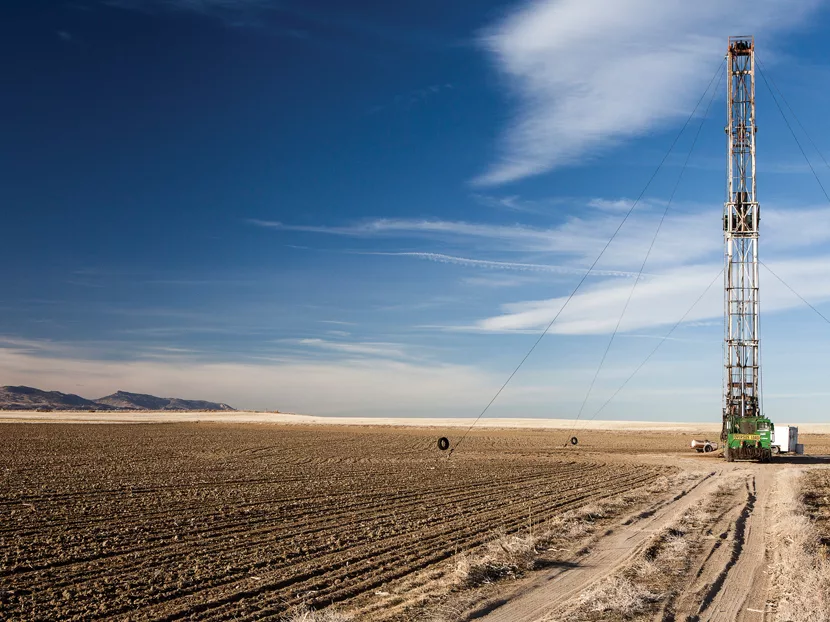The outcome of the Georgia Senate race has been determined, with the Democrats winning both seats, thus giving control of both houses of Congress to one party. And President Joseph Biden now occupies the White House.
That said, for the near term, I do not expect to see any major change in the transformation of the energy sector. President Biden will need to be measured in his approach. Midterm elections are looming and major revisions having negative impacts on the energy sector are sure to upset energy-dependent states.
The reality is that even as Democrats embrace renewables, oil and gas will remain essential for decades to come. The end of fossil fuels is predicted on optimistic assumptions regarding alternatives and unproven technologies that are nowhere close to being efficiently operational.
Hydraulic fracturing (fracking) and horizontal drilling for oil and gas provide 85 percent of the U.S. supply and will remain critical as the demand for these products remains essential to the economy. An upward trend for the industry could be regained much earlier than some of the naysayers are telling the public. As of this writing, WTI is at $53.01, Brent is at $56.46 and crude production is up approximately 11 million barrels/day.
The Bureau of Land Management issued a decision allowing the development of 5,000 new oil and gas wells in Converse County, Wyo. The project is expected to generate roughly 8,000 new jobs and approximately $18 billion to $28 billion in federal revenue.
Wyo. Gov. Mark Gordon praised the decision. “It establishes what has been my goal from the beginning — to provide actual year-round drilling opportunities,” he says. “This [Record of Decision] sets the framework for hundreds of jobs for Wyoming and ensures proper safeguards for the protection of our wildlife in the project area. It is an example that oil and gas operations and wildlife can co-exist in Wyoming.“
Diamondback Energy is betting on the resilience of the shale sector with the acquisition of two of its rival producers, Guidon Operating and QEP Resources, for approximately $1.4 billion that will expand its position in the Permian Basin.
Chemical Production to Gain Momentum
The U.S. chemical manufacturing industry is anticipating regaining production momentum after months of supply disruptions and declining demand due to the COVID-19 pandemic. Industrial Info is tracking 100-plus maintenance projects set to kick off during the first quarter of 2021.
Texas accounts for more than half of the total investment value (TIV) in first-quarter turnaround projects, with LyondellBasell Industries NV having five planned, the most of any one company. Three are at the company’s Bayport Polyolefins facility in Pasadena, Texas, with startups scheduled in March.
The two other turnarounds on the Texas Gulf Coast are a polyurethane unit at its chemicals complex in Channelview, Texas, which produces approximately 800 million pounds per year; and a gas-fired power unit at its olefins complex in Corpus Christi, Texas, which generates 45 MW.
Three Sasol Limited units at the Lake Charles Chemical Complex in Westlake, La., are set for turnaround maintenance in the first quarter: a 920-million pound/year ethylene unit, an alcohol production area and a 992-million pound/year linear low density polyethene unit. LyondellBasell entered into an agreement with Sasol North America, acquiring a 50-percent stake in Sasol’s base chemical business at the Lake Charles Chemical Complex for approximately $2 billion; it will operate the newly formed joint venture.
In addition, Ascend Performance Materials is preparing for a series of regular maintenance projects across the South, including two at its nylon fibers plant in Cantonment, Fla. Ascend also is preparing for turnaround projects on two coal-fired boilers and one gas-fired boiler at its synthetic fibers plant in Decatur, Ala.
Strong Industrial
Manufacturing Activity
The U.S. Southeast Region (Alabama, Florida, Georgia, Mississippi, Puerto Rico and Tennessee) is getting set for strong project activity in the industrial manufacturing industry. The region is anticipating $4.8 billion in project starts during the first quarter.
These projects span a diverse range of industry sectors, including automotive, distribution and warehousing, data centers and ports. Tennessee is the leading benefactor, with more than $2.4 billion TIV in planned project starts.
One of the top projects in the region is in the automotive sector. General Motors Co. is expanding its auto assembly and engine manufacturing plant in Spring Hill, Tenn.
The project consists of the renovation to the paint and body shops, upgrading the assembly plant and the installation of new machines, conveyors, controls and tooling equipment to increase the production of electric vehicles, including the Cadillac Lyriq electric crossover, notes Industrial Info.
Lumen Technologies intends to upgrade its data center in Jacksonville, Fla., by construction of a raised floor and the installation of a new generator and uninterruptible power supply systems to increase collocation services.
Port facilities in the region are being upgraded and repaired. Among these are upgrades to Berth 2 at the Colonel Island’s Terminal in Brunswick, Ga.
Metals, Minerals Project Startups
The U.S. metals and minerals sector is scheduled to see approximately $4.5 billion in startup projects during the first quarter.
U.S. Steel Corp. plans to resume construction in March on the $1 billion expansion of its Mon Valley steel works plant in Pennsylvania. The project includes construction of a cutting-edge, endless casting and rolling facility.
The Rocky Mountain region takes the lead over all other regions with $1.1 billion in total investment value. Cincer Wyoming’s $425 million Big Island trona mine and soda ash plant expansion in Green River, Wyo., was scheduled to begin construction late January, with completion in December 2022.
Tintina Montana is expected to start construction in March of this year of a copper mine and mill in White Sulphur Springs, Mont.
Price Increases
With the United States beginning to rebound from the COVID-19 pandemic, along with worldwide recovery in play, the clouds of price escalation are beginning to form. Increases in forged flange billet pricing are up more than 20 percent, various commodity steel product increases have already been posted, and an increase in carbon steel seamless pipe of 12 to 14 percent has been posted, with additional increases anticipated in the near future.
Since December, scrap prices rose sharply and are forecasted to be flat to a 5-percent increase in February.
It is strongly suggested that you keep in close contact with your suppliers regarding pricing and the availability of carbon-steel buttwelding fittings and forged-steel flanges.
I also encourage the sourcing of domestic welding fittings, forged-steel flanges and special forgings for quality and liability issues. The front-end savings derived from low-cost offshore materials are more often offset on the back end by the increase in the cost of installation due to poor quality and an increase in liability exposure.
PVF Roundtable News
The is first 2021 Networking Meeting of the PVF Roundtable is scheduled for Tuesday, April 13, 4:30 p.m., at the Bell Tower on 34th, 901 W. 34th St., Houston, 713-868-2355.
As a member of the PVF Roundtable’s board of directors, and I believe I speak for all members, I encourage you and your associates to attend the networking meetings. This is the only venue devoted solely to the PVF industry where information and ideas are exchanged, new contacts are developed and friendships are made.
Please check the PVF Roundtable website (www.pvf.org) regularly for any change in the schedule due to possible COVID-19 restrictions on gatherings.





